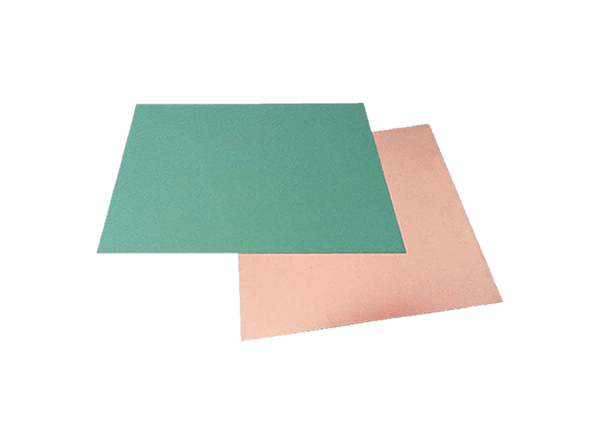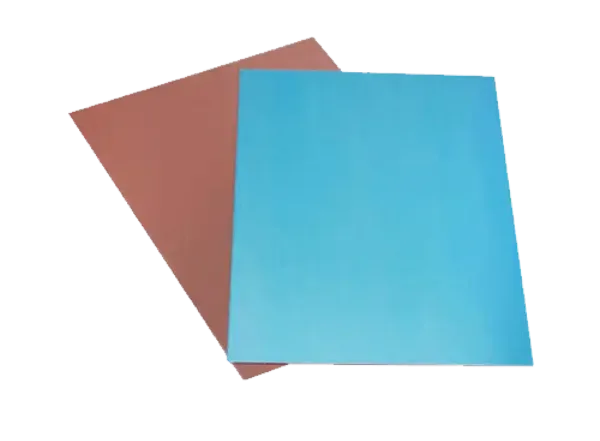The Secret Sauce Behind High-Performance Aluminum PCBs: Why This Thin Layer Matters More Than You Think
If you’ve ever wondered how your LED lights stay cool under intense brightness or why your smartphone charger doesn’t melt during fast charging, the answer lies in a hidden hero: the insulation layer of aluminum copper clad laminates (Al-CCL). Let’s peel back the layers to explore what makes this material so critical—and why engineers are obsessed with getting it just right.
1. Not Your Average Glue: The Magic Mix of Materials
At first glance, the insulation layer in Al-CCL looks like a simple adhesive. But it’s anything but. Picture this: a high-tech cocktail of epoxy or polyimide resins blended with ceramic particles like alumina (Al₂O₃) or boron nitride (BN). These ceramics aren’t just filler—they’re the VIPs that turn a basic polymer into a thermal conductivity powerhouse.
The resin acts like a flexible “glue” to bond everything together, while the ceramic particles create pathways for heat to zip through. For example, boron nitride offers top-tier thermal performance but costs more, while alumina strikes a balance between affordability and efficiency.
2. Walking a Tightrope: Balancing Heat, Insulation, and Durability
Designing this layer isn’t for the faint of heart. Engineers juggle three non-negotiable demands:
- Heat-Busting Prowess: Thanks to ceramic fillers, the insulation layer achieves a thermal conductivity of 1.5–3.0 W/m·K—orders of magnitude higher than traditional FR-4 substrates.
- Insulation That Won’t Quit: Even under high voltage (up to 5,000V), this layer stays stubbornly non-conductive, achieving resistivity levels up to 10¹⁵ Ω·cm.
- Survival Mode: The insulation layer’s low thermal expansion coefficient (CTE) keeps it in sync with the aluminum base, preventing cracks or delamination. Plus, it withstands 288°C soldering temps without bubbling or peeling.
3. Precision Engineering: Where “Good Enough” Isn’t Enough
The thickness of this layer is everything. Too thick? Heat gets trapped. Too thin? Risk a short circuit. Manufacturers like we nail this balance by keeping it razor-thin (75–150 μm) through laser-controlled coating and precision hot-pressing.
Uniformity matters even more than thickness. A single weak spot or air bubble can compromise performance. That’s why top-tier suppliers use automated optical inspection (AOI) to scan every square millimeter—because “close enough” doesn’t cut it in aerospace or medical devices.
4. Real-World Impact: From Your Desk Lamp to Mars Rovers
So where does this tech shine? Let’s break it down:
- LED Lighting: Al-CCL pulls heat away from diodes, boosting lifespan from months to decades.
- EV Power Modules: Electric cars demand PCBs that handle 500A+ currents without breaking a sweat.
- 5G Base Stations: Al-CCL’s thermal management ensures hardware stays cool even during data-heavy tasks.
5. The Future: Smarter, Thinner, Greener
Researchers are pushing boundaries with nano-ceramics for better heat spread and bio-based resins to reduce environmental footprints. Companies like we already offer Al-CCL with 2.0 W/m·K+ conductivity, proving innovation in this space is unstoppable.
The insulation layer in aluminum PCBs might be invisible, but its impact is anything but. By blending materials science with precision engineering, this unsung hero keeps our gadgets cool, reliable, and ready for whatever we throw at them. Next time you flip on a light or plug in your phone, remember: there’s a world of innovation packed into that paper-thin layer.
Fun fact: NASA uses aluminum PCBs in satellites—because even in space, heat management is a thing. 🚀




